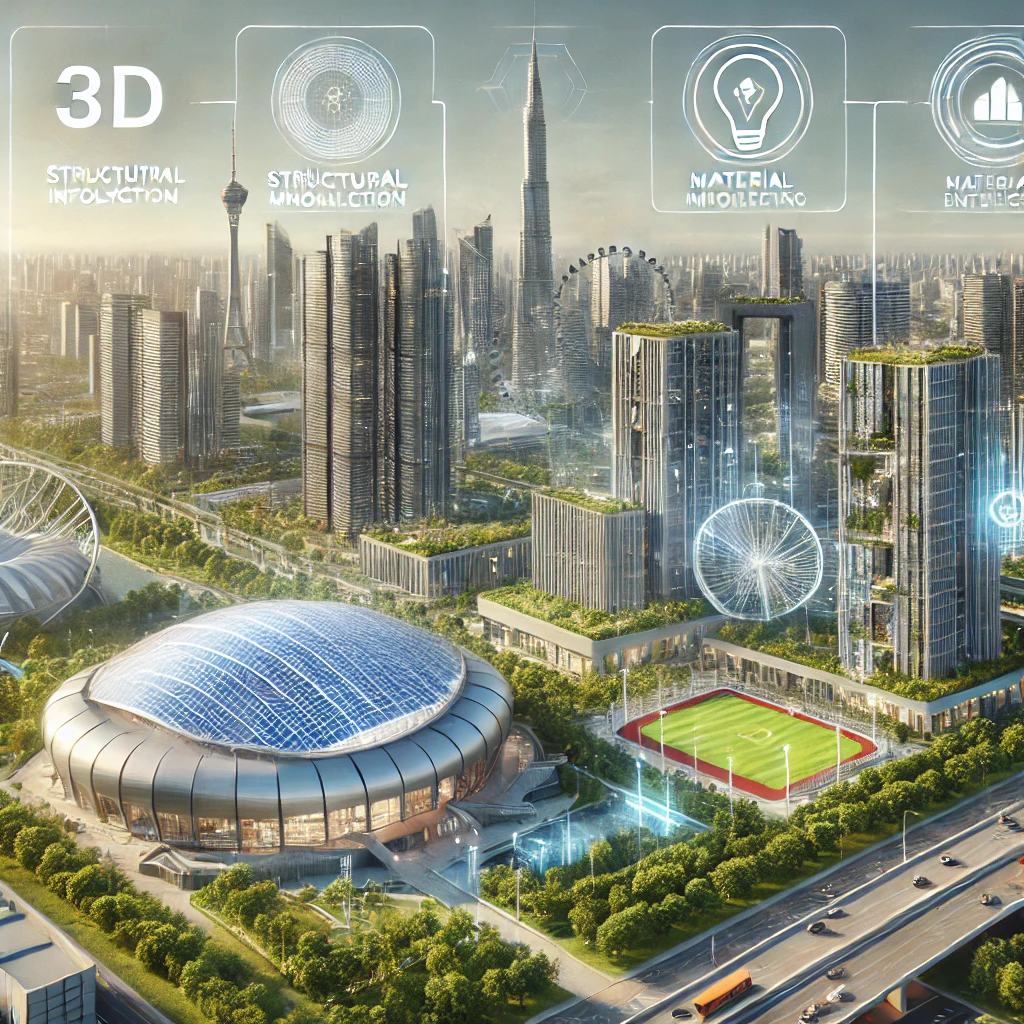
Why Structural BIM is Revolutionizing Investment Decisions
Structural Building Information Modeling (BIM) is more than a tool for architects and engineers; it’s a game-changer for investors. Gone are the days of relying solely on gut feelings or outdated spreadsheets. Structural BIM offers precise insights, empowering stakeholders to make decisions that stand the test of time—financially, environmentally, and structurally.
Think of Structural BIM as a trusted advisor that delivers actionable insights, grounded in hard data. Here’s how it reshapes the investment landscape:
Seeing the Big Picture
Imagine planning a high-stakes project: a corporate skyscraper, a sports arena, or a residential complex. Every decision—from material selection to design—carries massive financial implications. Structural BIM provides a bird’s-eye view of these decisions, assessing:
- Material costs and durability.
- Carbon footprint for sustainable building practices.
- Long-term ROI, including operational and maintenance costs.
BIM doesn’t just give you numbers; it forecasts the impact of every beam, column, and concrete pour over decades, allowing you to optimize for cost, sustainability, and performance.
Lessons from Real Projects
Case Study: Avoiding a Costly Mistake
A client once approached us with a half-finished multi-story parking garage. While the initial design seemed cost-effective, it overlooked long-term maintenance costs. Using Structural BIM, we revealed that opting for a slightly more expensive material would save millions in maintenance over the building’s lifecycle. The client made the switch, and today, that garage stands as a testament to the value of data-driven decisions.
Material Selection: The Sweet Spot
Choosing materials is like selecting between fast fashion and timeless staples. BIM helps you weigh upfront costs against lifecycle benefits. For instance:
- Reinforced Concrete vs. Steel: BIM analyzes not just the cost but also factors like maintenance frequency, insulation efficiency, and recycling potential.
- Sustainability Metrics: From carbon emissions to energy consumption, BIM quantifies the environmental impact of your choices, ensuring compliance with green building standards.
With Structural BIM, you’re not just choosing materials; you’re building smarter, more sustainable structures.
Long-Term ROI: More Than Just Dollars
Investors today prioritize projects that balance profitability with sustainability and social impact. Structural BIM enables you to measure:
- Energy efficiency: Optimize designs to minimize utility costs.
- Disaster resilience: Simulate scenarios to assess structural performance under stress.
- Community impact: Evaluate how your project enhances local economies and ecosystems.
How BIM Transformed a Local Landmark
A small town faced a dilemma: renovate its century-old library or build anew. Emotions ran high, but the budget was tight. We used Structural BIM to analyze both scenarios. The result? Retrofitting not only preserved the building’s historic charm but also cut operating costs in half through energy-efficient upgrades. Today, the library is a community hub and a model of sustainable development.
Energy Efficiency: A Hidden Goldmine
Energy costs often go unnoticed until they spiral out of control. BIM allows you to:
- Simulate energy performance: Test design tweaks like window placements or shading devices.
- Optimize HVAC systems: Compare efficiency under various loads to find the best fit.
By addressing these factors early, you’re not just cutting costs; you’re creating spaces that are comfortable, sustainable, and attractive to occupants.
Building Confidence with BIM
Structural BIM equips you with data-backed insights, eliminating guesswork from critical decisions. Whether pitching to investors or collaborating with architects, you can:
- Justify material and design choices.
- Present sustainability metrics with confidence.
- Ensure your project aligns with long-term goals.
Conclusion: Why You Need BIM Now
Structural BIM isn’t just a tool; it’s a strategy for smarter investments. It bridges the gap between vision and reality, ensuring your projects are financially sound, environmentally responsible, and structurally robust.
Ready to revolutionize your investment decisions? Let’s harness the power of Structural BIM and build a future you can be proud of.
Know about Construction Adhesives Market Analysis of Competitive Strategies and Key Players